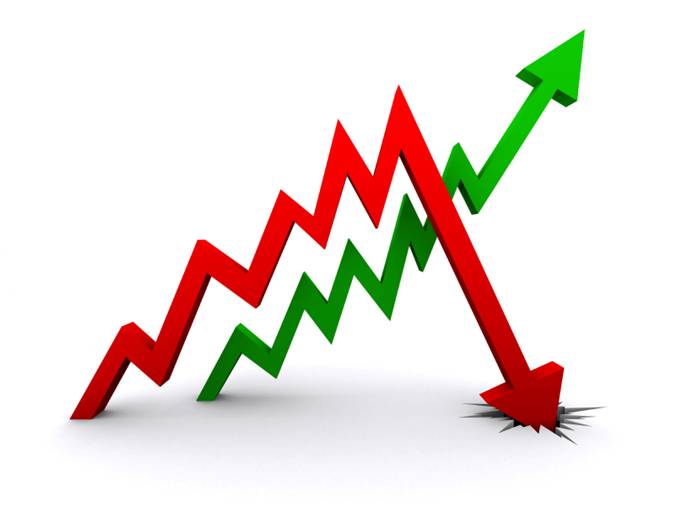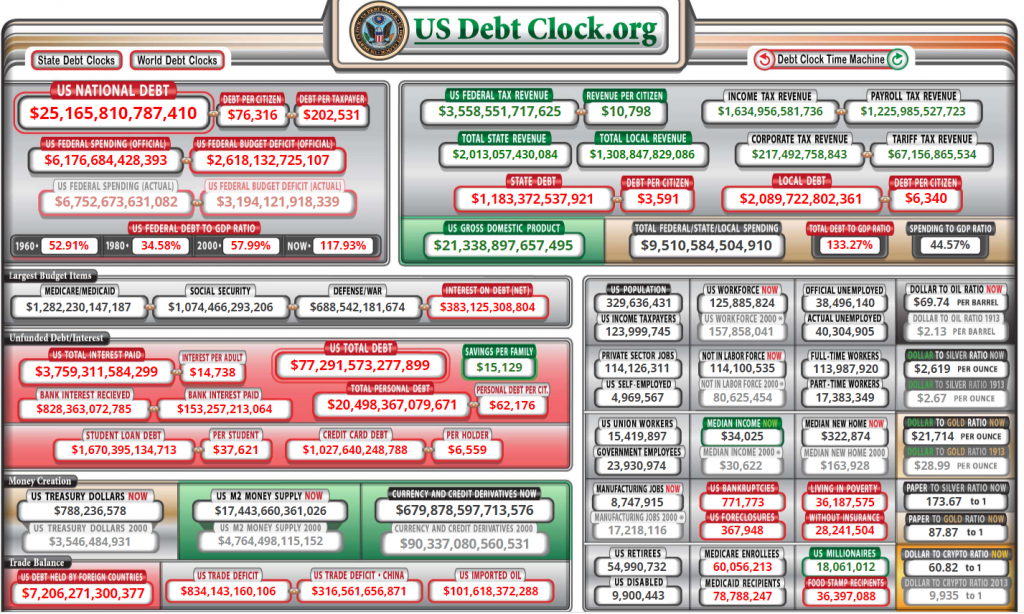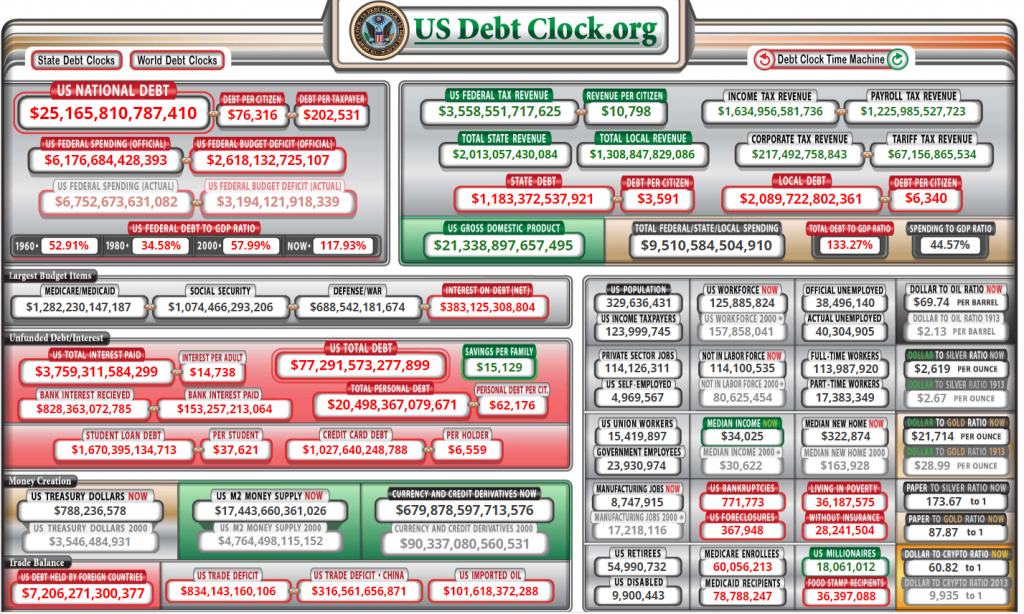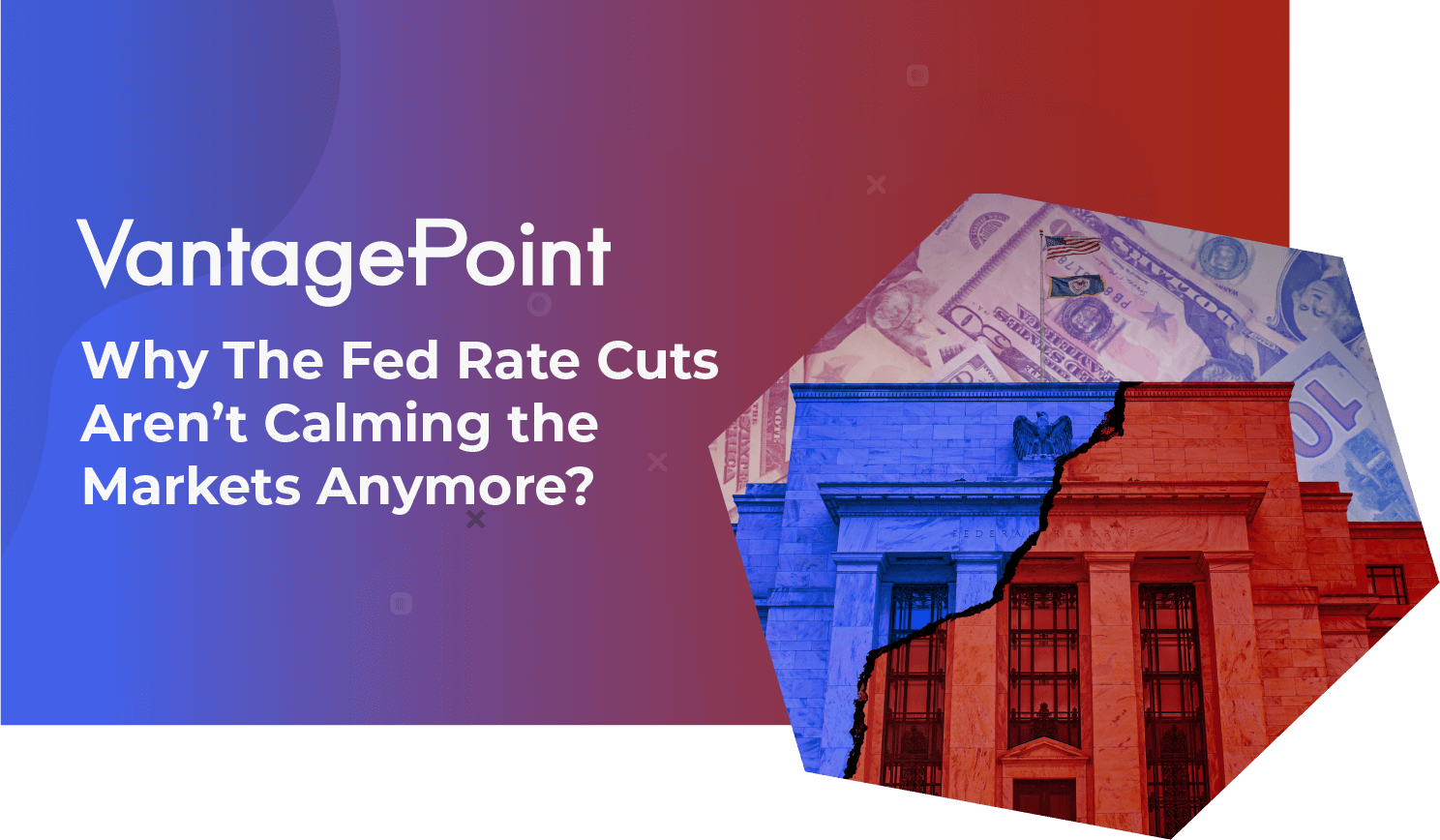Boom-Bust. Boom-Bust. Boom-Bust.
This Time Is Different!
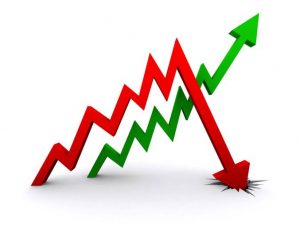

Over the past century or so, science has presented mankind with spectacular advancements in just about all fields of study… with the exception of economics. The “dismal science” as it is sarcastically known by economists continues to operate from ideas that run counter to good old common sense. If you question this perspective, show me any economist who successfully saw danger on the horizon in 2007 or 2019 and foresaw the economic disasters which have followed.
On November 9, 2008, only 6 weeks after the worst financial crisis since the Great Depression hit the world economy, Queen Elizabeth II, the monarch of the United Kingdom delivered a very powerful speech to the London School of Economics.
In her speech she asked a very simple, yet profound, question that is worthy of every trader’s attention. She asked:
“Why did no one see the financial devastation of Fall 2008 ahead of time?”
Eight months later, the Members of the British Academy posted a response in the Financial Times that illustrates how experts, avoid blame.
What did members of the Academy cite as the true cause of the financial crisis?
“Principally a failure of the collective imagination of many bright people, both in this country and internationally, to understand the risks to the system as a whole.”
I’m sure it wouldn’t take you eight months to come up with an answer.
Now that we are in the midst of yet another economic contraction that is making 2008 look small in comparison, how would you reply to the Queen’s question?
Not one individual or organization was ever held accountable for the 2008 Financial Crisis. Over the last 12 years numerous groups and journalists have asked the question, what did we really learn from the 2008 crisis? Unfortunately, it looks like we have not learned anything and are simply going to the same failed playbook for solutions. It pretty much ensures that we are going to repeat this scenario again and again. Boom-Bust.
Debt. It is the only game in town if you listen to any establishment economist.
Debt only grows and few appear troubled by it, or even choose to question it.
Debt is Modern Monetary Theory.
Paying the interest on that debt is why the economy is in such a mess. Since the 2008 financial crisis, the Fed has manipulated interest rates by pushing them down to almost 0% to keep the interest rate payments on the debt as manageable as possible. A small uptick in the interest rate increases the payments we must make on this gargantuan debt and thus puts the breaks on the economic engine.
Take a look at the following website to get a sobering perspective of debt.
Spend some time trying to understand each category of DEBT by hovering your cursor over each section.
Were you aware that “YOU” the average American taxpayer owes $203,000 as your share of the debt?
Want to guess what amount that grows to in a mere four years, at current interest rates?
How about $316,000! That’s a 55% growth rate in only 4 years!
Examine Unfunded debts. Medicare. Social Security. Credit Card Debt. Student Loans.
Look ahead at what the mountain of debt looks like four years into the future:
Notice how quickly our nation’s debt increases. Notice how revenue into the government’s coffers is going backwards thereby increasing debt even further.
Examine other nations and you’ll find carbon copies of the United States template.
It is quite a sobering exercise.
But this is the magical power of the monetary printing press. The source of all quantitative easing over the last decade and the recent stimulus programs.
Why is this of concern?
All Debt is a claim on the future.
Logically, if debt represents a claim on the future then larger amounts of debt represent even larger claims on the future. The more claims you have on the future the less freedom you have.
Let’s recall that debt carries with it the expectation of repayment of both the principal and the interest components. We as a nation can’t even afford to pay the interest on the debt. We are borrowing to pay the interest on the debt. Technically that is the definition of insolvency.
Therefore, every incremental expansion of the level of debt is an explicit assumption that the future has to be larger than the present. And not just a little bit larger — the future has to be exponentially larger than the present for debts to be fully paid back and not defaulted upon. If the future shrinks even the slightest bit the debt growth exponentially quickens as more debt is added into the mix to get the economy back on track.
Here are some headlines which support the idea of our addiction to Boom-Bust debt bubbles:


Given that Unfunded U.S. debts now represent over 800 percent of GDP and total liabilities over 1000 percent of GDP, there’s an explicit assumption being made by the debt markets that the future GDP of the United States is going to be larger than today’s GDP.
More widgets must be sold and consumed to pay back the loans that are already booked.
Any continuation of debt expansion will compound these claims on the future.
What COVID-19 has exposed is how fragile the American economy was. How do you sell cars when nobody is driving anywhere anymore? How do restaurants sell meals when nobody is going to restaurants? How do manufacturers manufacture when social distancing prevents their normal manufacturing processes from occurring?
Here are some cold hard numbers worthy of consideration:
In just three months, as a percent of GDP, both the G20 nations and the United States have already exceeded the amount of Quantitative Easing done over the three full years between 2009 and 2011.
The amount of Quantitative Easing they’ve explicitly stated at present time is unlimited.
In 1987 U.S. Debt stood at $2.34 trillion. This represented only 48% of the GDP. (Everything produced in the economy.) The current COVID-19 Stimulus numbers that are being proposed amount to $5 to $7 trillion.
In the 2008 Financial Crisis U.S. debt had grown to $10.025 trillion and this represented 68% of the GDP.
Today, in 2020 U.S. Debt is at $24.057 trillion before the COVID Stimulus, and this amount represents 108% of GDP. In other words, the debt and the corresponding interest is greater than the entire output of the country.
QE has added 22 trillion dollars of debt or grown by 928% over the last 33 years. However, GDP has only increased by 124% during this same time frame. This indicates that DEBT is piling up 700% faster than real growth and that is a recipe for tremendous volatility across all financial assets.
We are told that we must go deeper into debt to fix our debt crisis, and that we must spend more in order prosper.
“Debt is Wealth.”
“Spending Is Prosperity.”
Great attempts have been made to convince us of the complexity of economic activity and how mere mortals are incapable of offering solutions or understanding these monumental economic problems.
As I experience the post COVID-19 economy, I am convinced that we are witnessing the decoupling of the State and Money.
At first, this sounds utterly preposterous, considering that the State has spent trillions of dollars in record stimulus to accommodate the economic contraction that has occurred.
What is painfully obvious to me is that the citizens of the world aren’t buying that these types of crises every few years are the “new normal.” Over the past 20 years we have witnessed three major boom-bust cycles, the internet bubble, the housing bubble of 2008 and the COVID-19 bubble. Each one is worse than its predecessor because of the exponential debt growth.
Welcome to the dark side of quantitative easing.
It is the ultimate monetary drug.
Instant highs. But the addiction and side effects are progressively worse the more debt you consume.
One of the most fundamental questions to modern economics is the question of exactly what money is. Strangely enough, this is very often something that is taken for granted. Sure, we all know what money is, we use it to acquire and consume anything we need and want.
I’m sure you have heard of the expression “as good as gold”?
Why is it that we never use the expression “good as fiat?”
Today the world is a fiat money system. It is a printing press dictated by political whims and desires. Asset-backed money was replaced by fiat money for purely political reasons.
Former Federal Reserve chairman Alan Greenspan summed it best when he said in 2014: “Gold is a currency. It is still, by all evidence, a premier currency. No fiat currency, including the dollar, can match it.”
Fiat money is currency that is backed by government decree. It is essentially a monetary system backed by political promises. Fiat money gives governments’ central banks greater control over the economy because they control how much currency is printed. One danger of fiat money is that governments will print too much of it, resulting in hyperinflation.
“Fiat” comes from the Latin and means “as you wish.” The current fiat money system is essentially worldwide since every country followed the path of the U.S. shortly after we went off the gold standard.
The oldest existing fiat currency is the British pound which was created in 1694. One British pound originally represented one troy pound of sterling silver. At a ripe old age of 326 years it must be considered a highly successful fiat currency. However, success is relative. The British pound was defined as 12 ounces of silver, so it’s worth less than 1/200 or 0.5% of its original value. Today the British Pound, like all fiat currencies, are only backed by political promises.
A money that is only backed by political promises is divisive and incapable of acting as a store of value. There needs to be an ‘adult in the room’ who recognizes that the printing press and modern monetary theory is the source of the boom-bust cycles that are recurring in our economy and causing such massive disruptions. To quote Billionaire Bond Investor Jeff Gundlach, “Modern Monetary Theory is not a good idea. It’s not modern, it’s not monetary, and it isn’t much of a theory. If endless borrowing is a viable solution, why did we have any taxation in the first place?”
One of the unfortunate things about the commentators and talking heads in the media is that they all promote that COVID-19 is the reason the economy is in such a mess.
This explains why economics is considered to be the “dismal science.” COVID-19 was the catalyst the uncovered the fragility of our debt based monetary system. The reason the economy is in such a mess is because the printing press is the solution to every problem we face and this allows politicians to debase and devalue the currency in the name of solving problems for the national good.
Kenneth Rogoff and Carmen Reinhart created a landmark book covering over 800 years of economic data, international debt, banking crises, inflation, currency crashes and debasements. The book is appropriately entitled: “This Time Is Different. Eight Centuries of Financial Folly.”
Throughout history, many governments, have gotten themselves trapped into a situation best described as “too much debt, or living beyond ones means.” In every case, the same rationale printing press solutions have been tried, all to no avail.
This book reveals that throughout history, the response has nearly always been to try and squeeze past the difficulties by printing more money in the hopes that somehow things will work themselves out. But, unfortunately, “printing” has only served to deepen the severity of the economic and political pain. Yet it has been tried again and again as if there’s a complete unwillingness to learn from history.
We have seen this happen over and over again in other parts of the world.
The American mindset is that it is impossible that it would ever occur here.
And right now we are following the monetary playbook of every great dynasty that has fallen before us. It’s called Quantitative Easing Infinity.
There is so much we don’t know about the economic consequences of this COVID-19 pandemic. Will we see major inflation? Depression? Stagflation?
I am hearing a new word thrown around in economic conversations INDEFLATION. This is when INFLATION and Deflation occur simultaneously in the economy. Deflation occurs when people stop buying items that are no longer essential. Inflation occurs when the price increases on items that are considered essential.
What has become totally obvious is that central banks around the world are going to continue printing incomprehensible sums of money– this is ‘whatever it takes’ monetary policy.
Our only decision is how we choose to react.
So what’s a trader to do?
If even 10% of what I have written is accurate we will see volatility in the markets unlike anything we have ever witnessed before. Volatility is a trader’s best friend if you know how to position yourself on the right side of it and ride the trend.
We live in a world that just a few short years ago economists told us could never occur. I am referring to negative interest rates, negative crude oil prices.
How good are you at making sense of it all?
At Vantagepoint A.I. our focus for 40 years has been to Empower Traders Daily with our Machine Learning, Neural Networks and Artificial Intelligence Market Forecasts.
Our forecasts are created by looking at the top 32 drivers of an assets price. We do this from the foundational perspective that we live in a global marketplace. What happens in one part of the world has global implications and you charts and analysis need to communicate this information to you before you ever think of putting on that next trade.
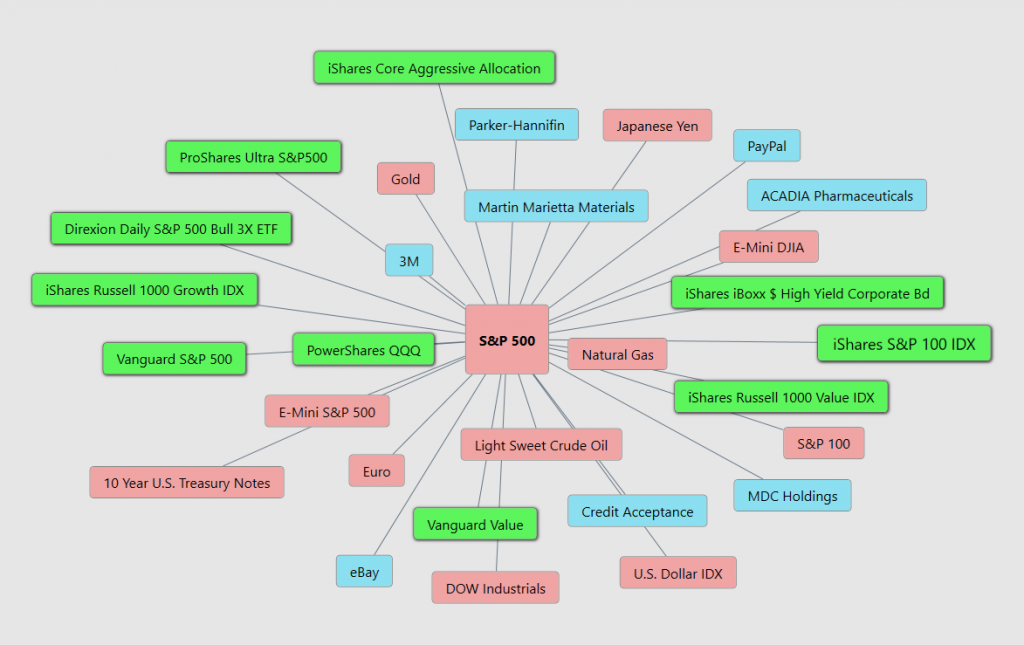
S&P 500 Index Key Price Drivers
Moving forward I want you to think long and hard about HOW you are going to trade the markets if you do not have an edge. As the volatility of the past few months becomes commonplace are you prepared?
Think about those losing trades and ask yourself what did you learn from that experience? What is your method for analyzing risk?
Are you capable of finding those markets with the best risk/reward ratios out of the thousands of trading opportunities that exist?
Here is a snapshot of our published forecasts on the S&P 500 over the past 3 months:
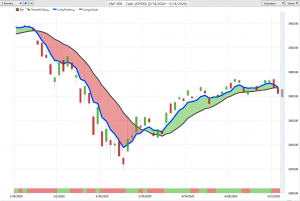
S&P 500 Index with Vantagepoint a.i. forecasts
Knowledge. Useful knowledge. And its application is what ai delivers.
Artificial intelligence is not “a would be nice to have” tool.
It is an “absolutely must have” tool to flourish in today’s global markets.
Knowledge. Useful knowledge. And its application is what ai delivers.
The beauty of artificial intelligence is that it looks at these global correlations for each asset statistically to uncover the best opportunities and trends.
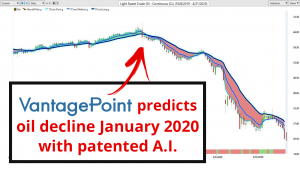
Crude Oil Price With Vantagepoint a.i. forecast
Over the coming weeks, you can rest assured that Vantagepoint Power Traders will continue to build wealth one trend at a time, even in these volatile conditions.
Intrigued? Visit with us and check out the a.i. at our Next Live Training.
Discover why artificial intelligence is the solution professional traders go-to for less risk, more rewards, and guaranteed peace of mind.
It’s not magic. It’s machine learning.
Make it count.





